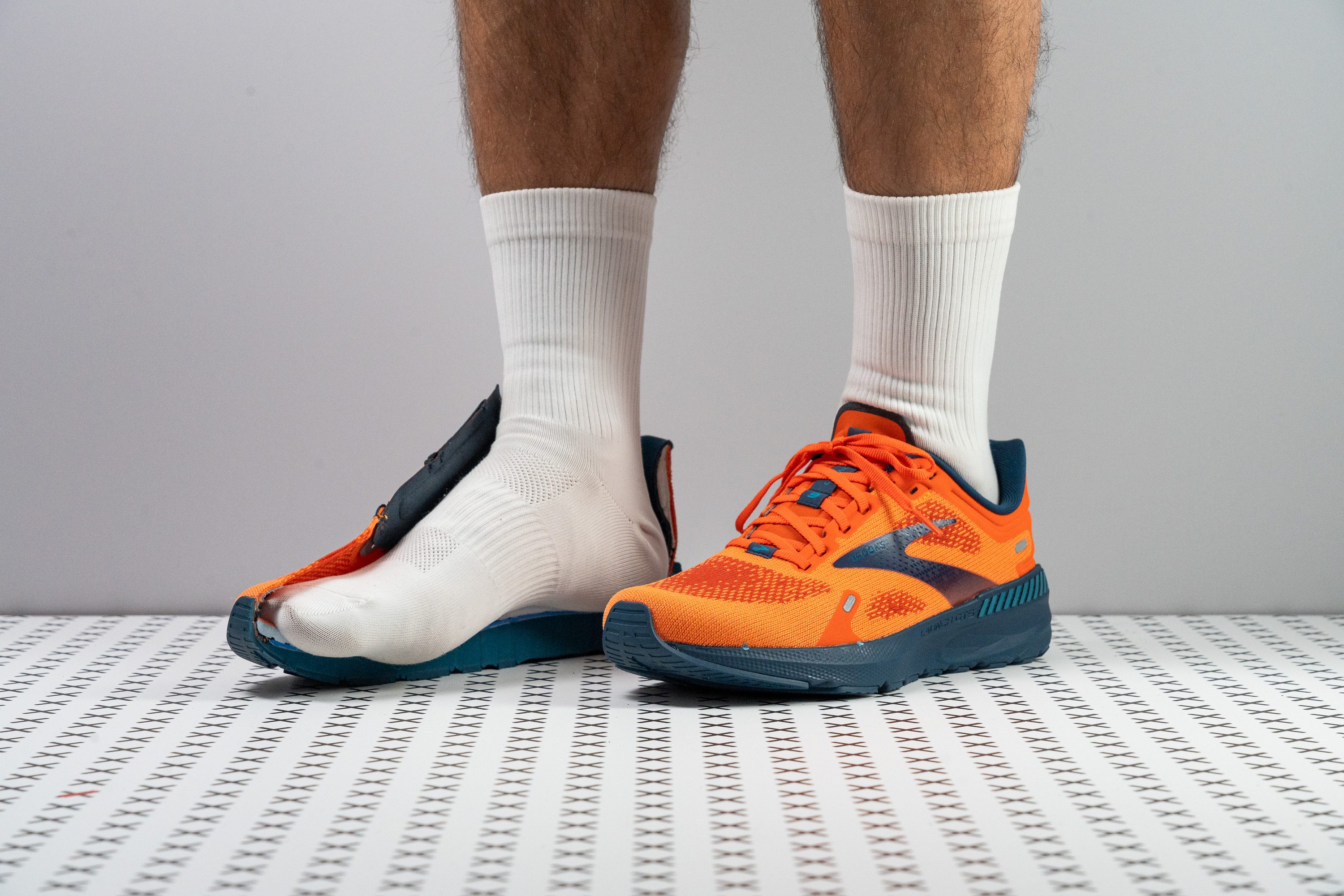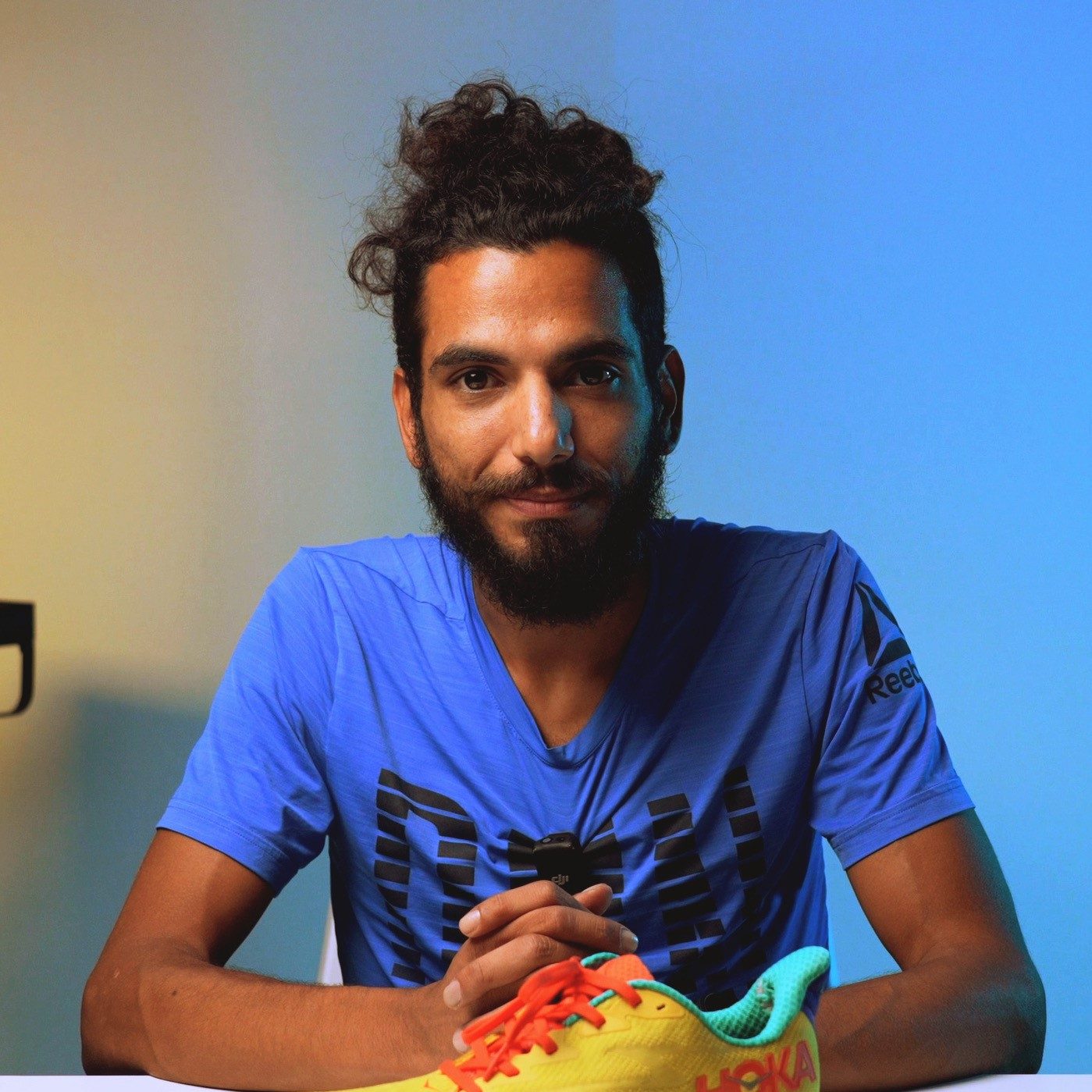Our verdict
Pros
- Stable for overpronators
- Not overbearing for neutral runners
- Very lightweight for a stability shoe
- Smooth and lively ride
- Mutes out impact effectively
- Supportive fit during fast runs
- Can go the distance
- Grippy and durable outsole
- Can take some light trails
- Secure heel hold
- Comes in multiple width options
- Sustainable and wallet-friendly
- Great for beginners
Cons
- Not as fast as other tempo trainers
- Lacklustre breathability
- Laces too short for the runner's knot
Audience verdict
Comparison
The most similar running shoes compared
+ + Add a shoe | |||||
|---|---|---|---|---|---|
| Audience score | 87 Great! | 89 Great! | 83 Good! | 87 Great! | |
| Price | £110 | £130 | £160 | £110 | |
| Pace | Daily runningTempo | Daily running | Daily running | Daily running | |
| Shock absorption | - | Moderate | Low | Moderate | |
| Energy return | - | High | Low | High | |
| Traction | - | Moderate | Moderate | - | |
| Arch support | Stability | Stability | Stability | Stability | |
| Weight lab Weight brand | 8.6 oz / 245g 8.7 oz / 246g | 9.8 oz / 279g 9.8 oz / 278g | 11.6 oz / 329g 11.3 oz / 320g | 10.3 oz / 293g 10.5 oz / 297g | |
| Lightweight | ✓ | ✗ | ✗ | ✗ | |
| Drop lab Drop brand | 10.4 mm 10.0 mm | 10.0 mm 10.0 mm | 7.9 mm 10.0 mm | 9.8 mm 10.0 mm | |
| Strike pattern | Heel | HeelMid/forefoot | Mid/forefoot | HeelMid/forefoot | |
| Size | True to size | True to size | True to size | True to size | |
| Midsole softness | Balanced | Balanced | Balanced | Firm | |
| Difference in midsole softness in cold | Small | Small | Normal | Small | |
| Toebox durability | Decent | Decent | Good | Decent | |
| Heel padding durability | Good | Bad | Good | Good | |
| Outsole durability | Good | Decent | Good | Bad | |
| Breathability | Warm | Moderate | Moderate | Warm | |
| Width / fit | Narrow | Medium | Narrow | Medium | |
| Toebox width | Medium | Wide | Medium | Wide | |
| Stiffness | Stiff | Flexible | Moderate | Stiff | |
| Torsional rigidity | Stiff | Moderate | Stiff | Moderate | |
| Heel counter stiffness | Stiff | Stiff | Moderate | Moderate | |
| Heel lab Heel brand | 33.8 mm 36.0 mm | 33.1 mm 36.0 mm | 33.2 mm 31.0 mm | 32.9 mm 31.0 mm | |
| Forefoot lab Forefoot brand | 23.4 mm 26.0 mm | 23.1 mm 26.0 mm | 25.3 mm 21.0 mm | 23.1 mm 21.0 mm | |
| Widths available | NarrowNormalWide | Normal | Normal | Normal | |
| Orthotic friendly | ✓ | ✓ | ✓ | ✓ | |
| Season | All seasons | All seasons | All seasons | All seasons | |
| Removable insole | ✓ | ✓ | ✓ | ✓ | |
| Ranking | #314 Top 48% | #110 Top 30% | #251 Bottom 32% | #170 Top 46% | |
| Popularity | #559 Bottom 15% | #259 Bottom 30% | #159 Top 43% | #352 Bottom 5% |
Who should buy
We recommend the Brooks Launch GTS 9 as an excellent choice for:
- Overpronating runners who need a supportive stability shoe that isn't too overbearing underfoot and rides like a neutral trainer
- Runners of all experience levels looking for a lightweight and versatile workhorse that can comfortably tackle just about any pace or distance
- Those who contend with harsh winters and need a warm shoe whose performance isn't negatively impacted by cold conditions
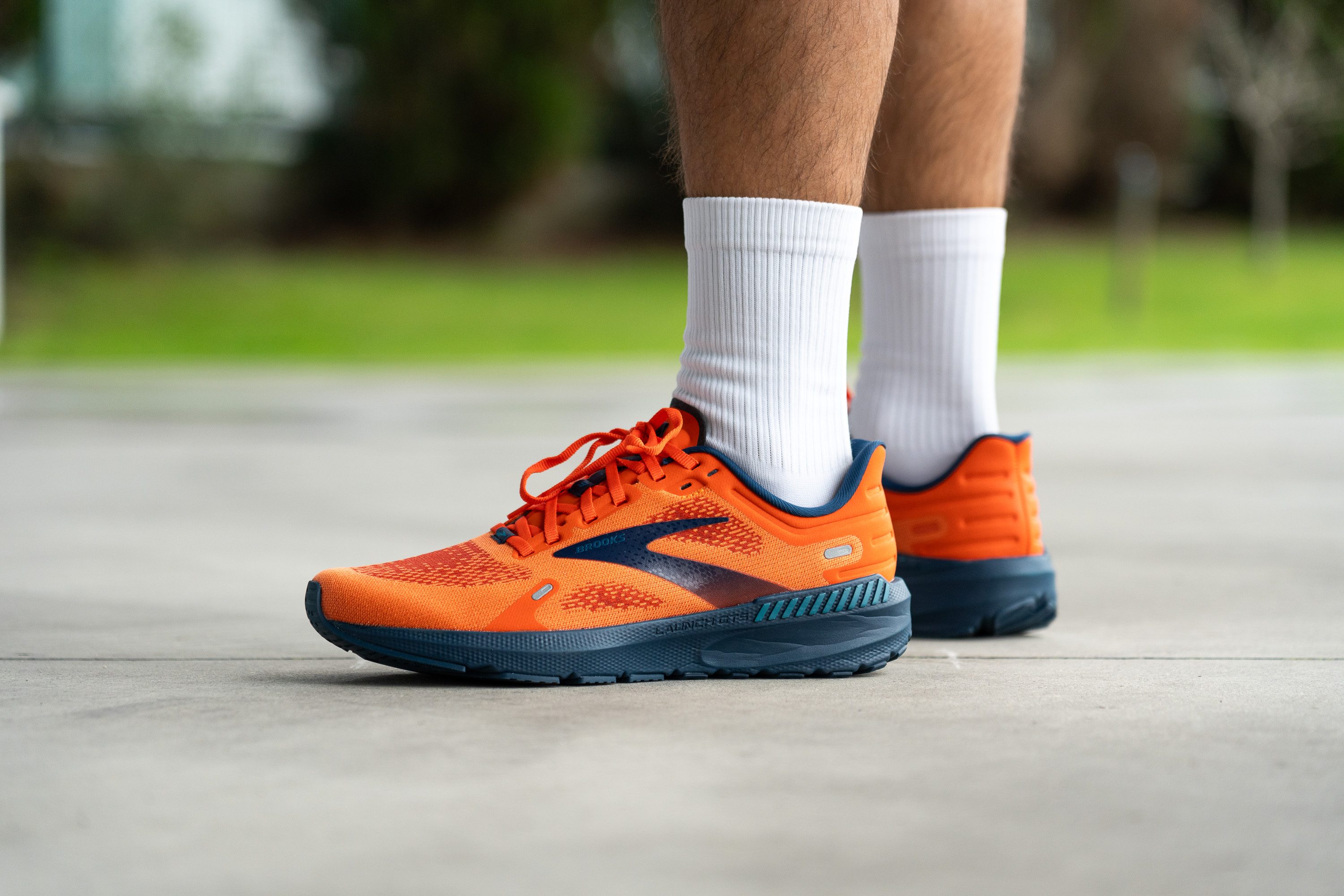
Who should NOT buy
The Launch GTS 9's creel wrap mesh upper is undeniably toasty, making the shoe a less-than-ideal choice for muggy summer runs. We recommend the Brooks Glycerin GTS 20 as an airier option for those warmer days.
It's often said that a jack of all trades is a master of none; and while this versatile workhorse is certainly speedy, the Launch GTS 9 isn't the fastest in terms of tempo trainers. The Brooks Hyperion GTS is the shoe's speed demon cousin that's much better suited for smashing PB's.

Cushioning
Heel stack
We measured the Launch GTS 9's stack to be 33.8 mm thick at the heel which is right on par with our current lab average. This gives us plenty of foam underfoot to ensure well-protected landing over just about any distance.
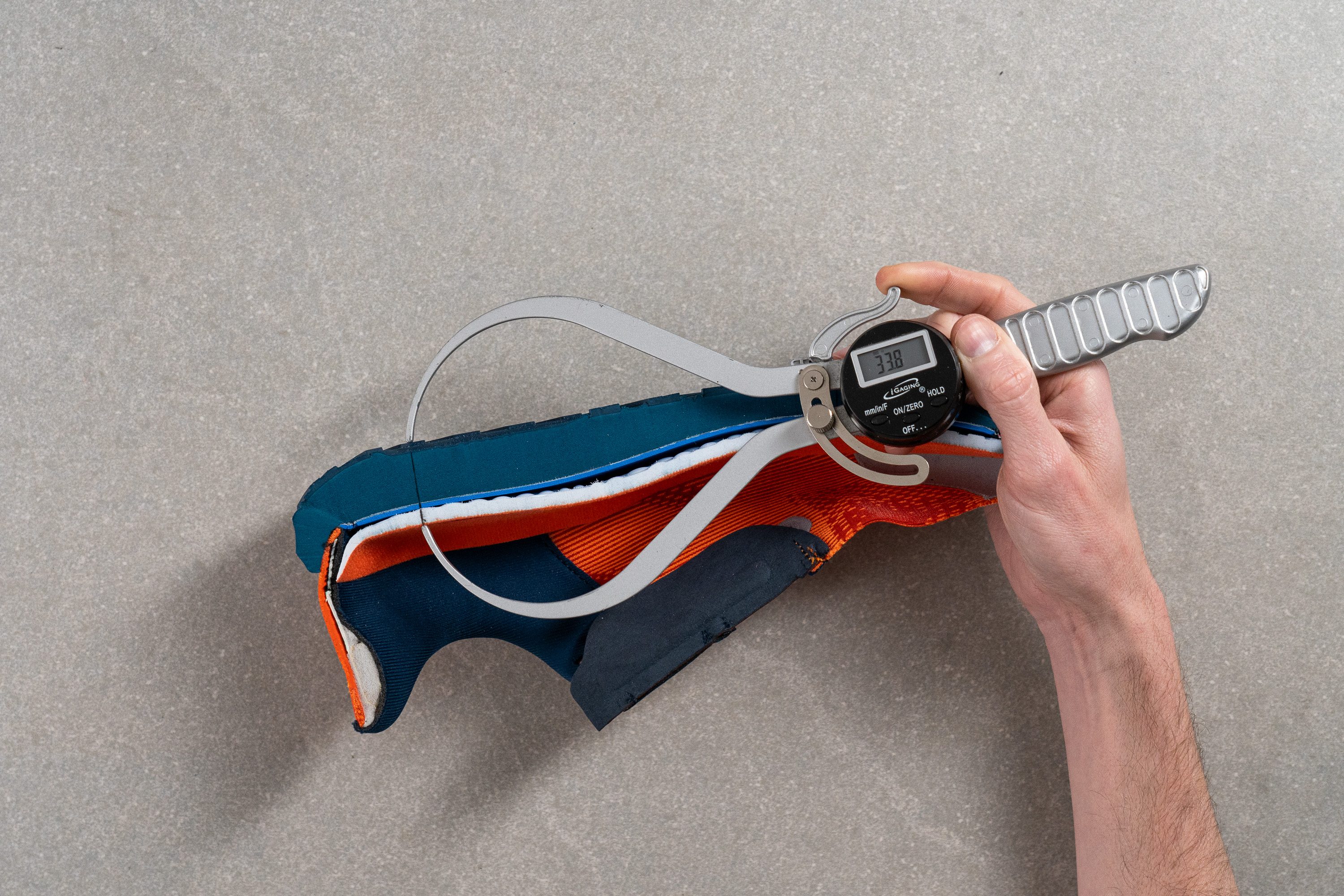
| Launch GTS 9 | 33.8 mm |
| Average | 34.8 mm |
Forefoot stack
At the forefoot, the stack is slightly shorter than average at only 23.4 mm according to our caliper measurements. This is also an adequate amount of foam to provide us with enough protection while testing the shoe.
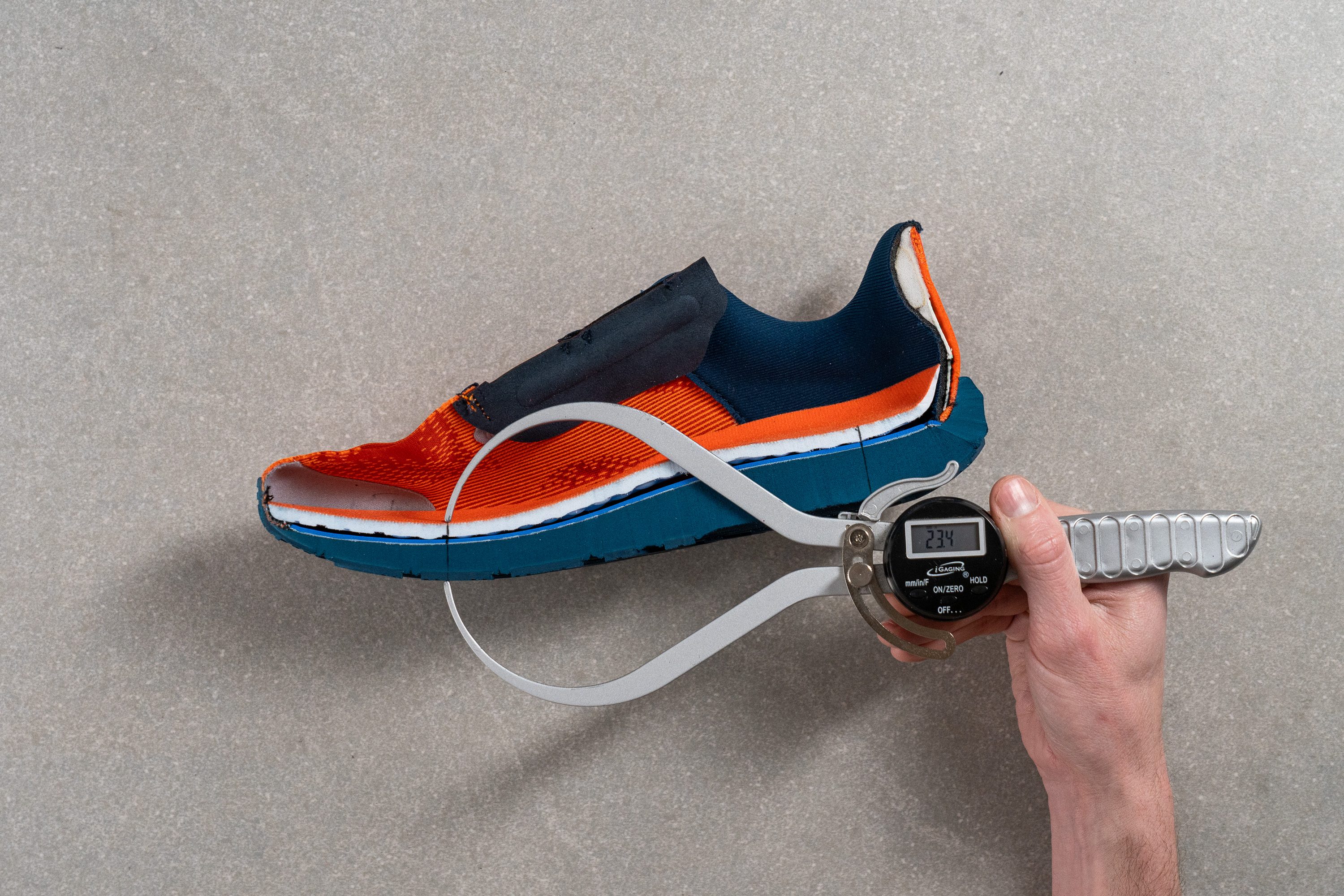
| Launch GTS 9 | 23.4 mm |
| Average | 26.2 mm |
Drop
The difference in our stack measurements leaves the Launch GTS 9 with a drop height of 10.4 mm, making the 10 mm as stated by Brooks incredibly accurate. This isn't always the case as we've found many discrepancies with brand-stated drop heights as this article explores.
This offset puts the Launch GTS 9 in the category of high-drop shoes which tend to favour those with a heel-striking stride. However, we found that it still comfortably suits the needs of midfoot strikers and provides smooth and natural feeling transitions.
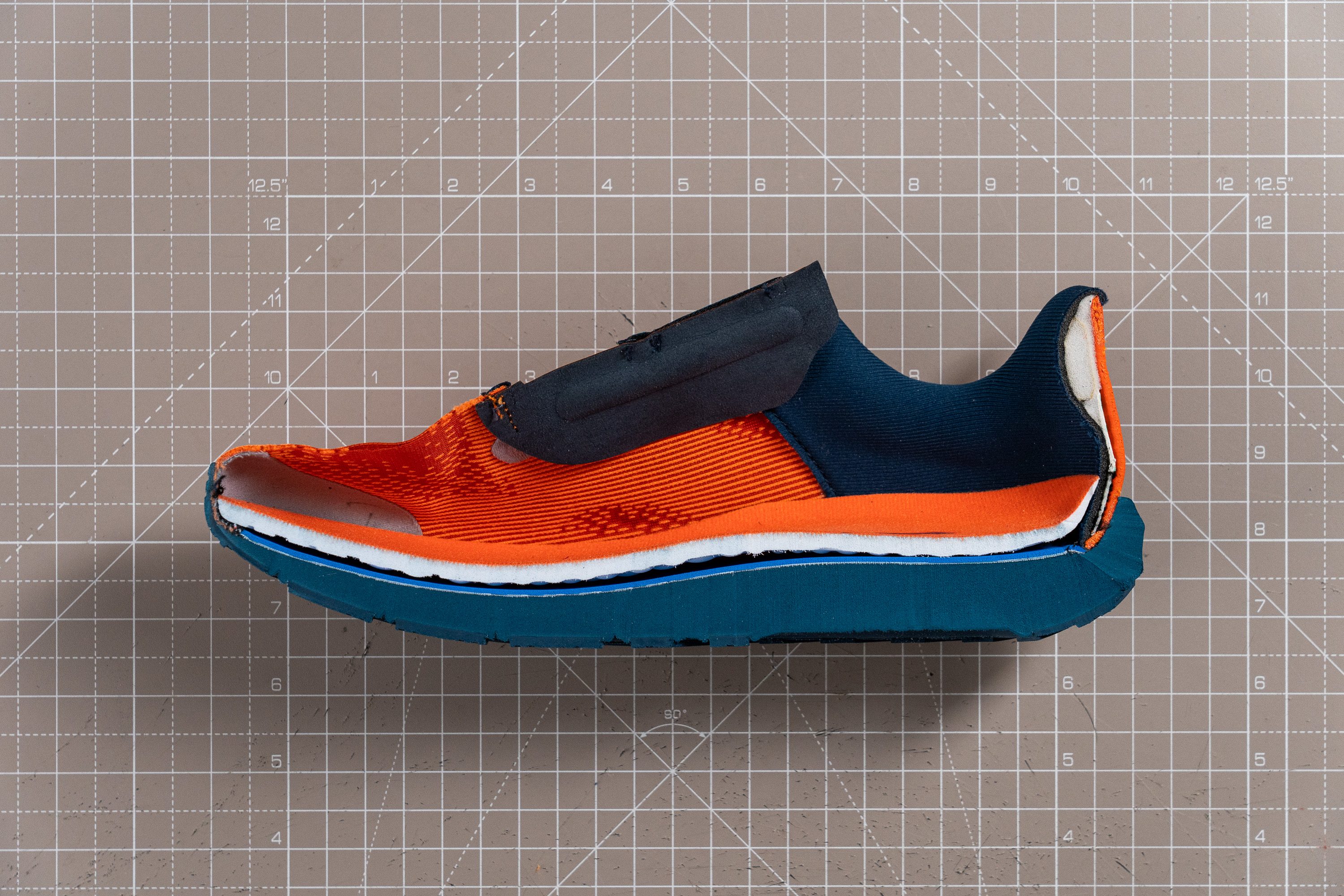
| Launch GTS 9 | 10.4 mm |
| Average | 8.6 mm |
Midsole softness
The BioMoGo midsole foam is neither too plush nor too firm, instead compressing nicely under our weight enough to dampen the impact of our landings.
This is borne out by our durometer which gives us a slightly firmer-than-average reading of 26.4 HA when we pressed it against the dissected midsole's foam.
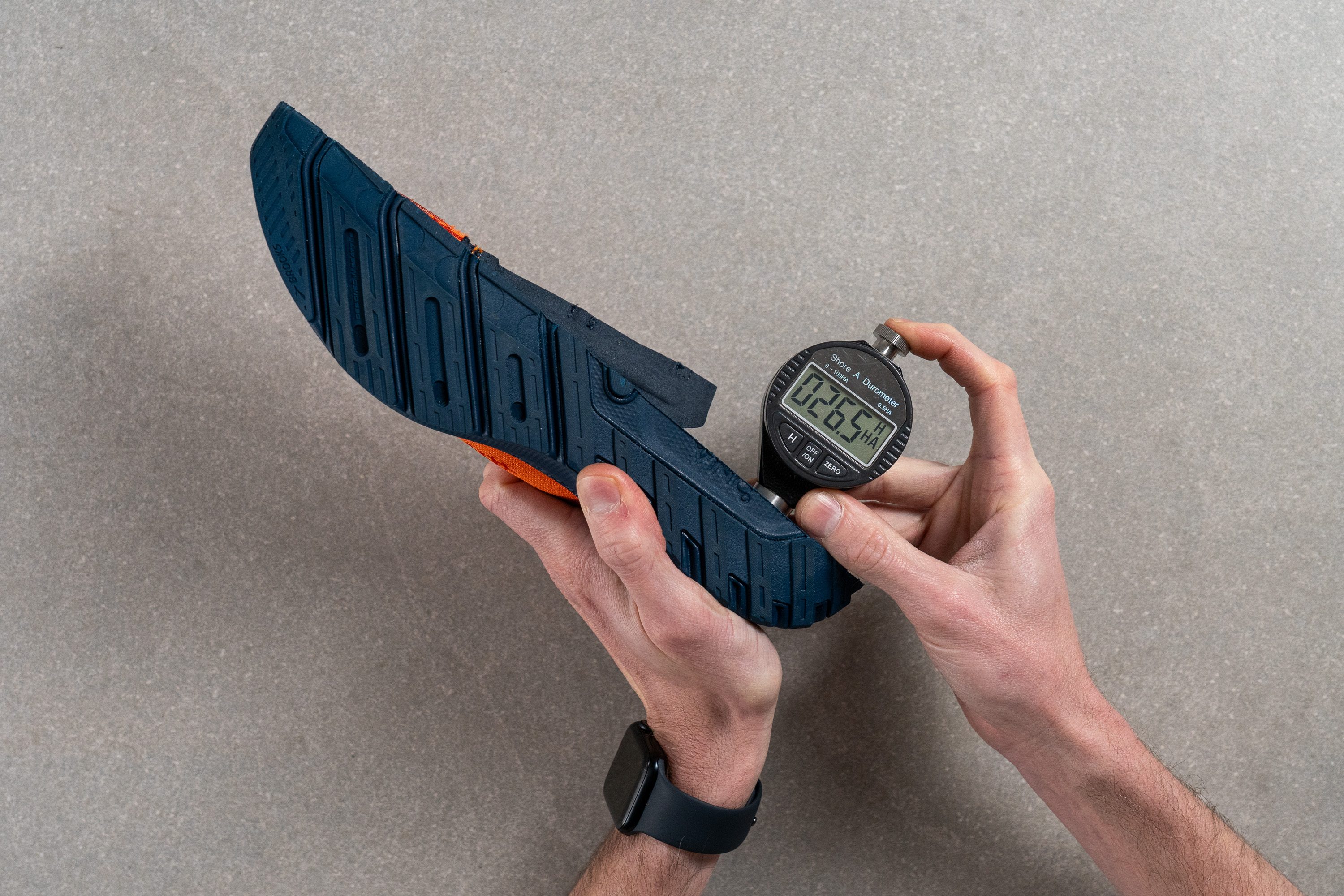
Beyond its cushioning abilities, the real selling point of the BioMoGo foam is its lively rebound that gives our strides a satisfying bounce. This responsiveness makes it much more compelling to put the pedal to the metal and up the pace while testing this spry and nimble shoe.
| Launch GTS 9 | 26.4 HA |
| Average | 20.4 HA |
Size and fit
Size
Brooks Launch GTS 9 fits true to size (11 votes).
Toebox width - widest part
Using our caliper, we measured the toebox at its widest point to be 97.3 mm wide. This is just shy of our current lab average but should still provide most runners with a nice and secure fit. That said, the Launch GTS 9 comes in several width options for runners with especially broad feet who need more internal real estate.
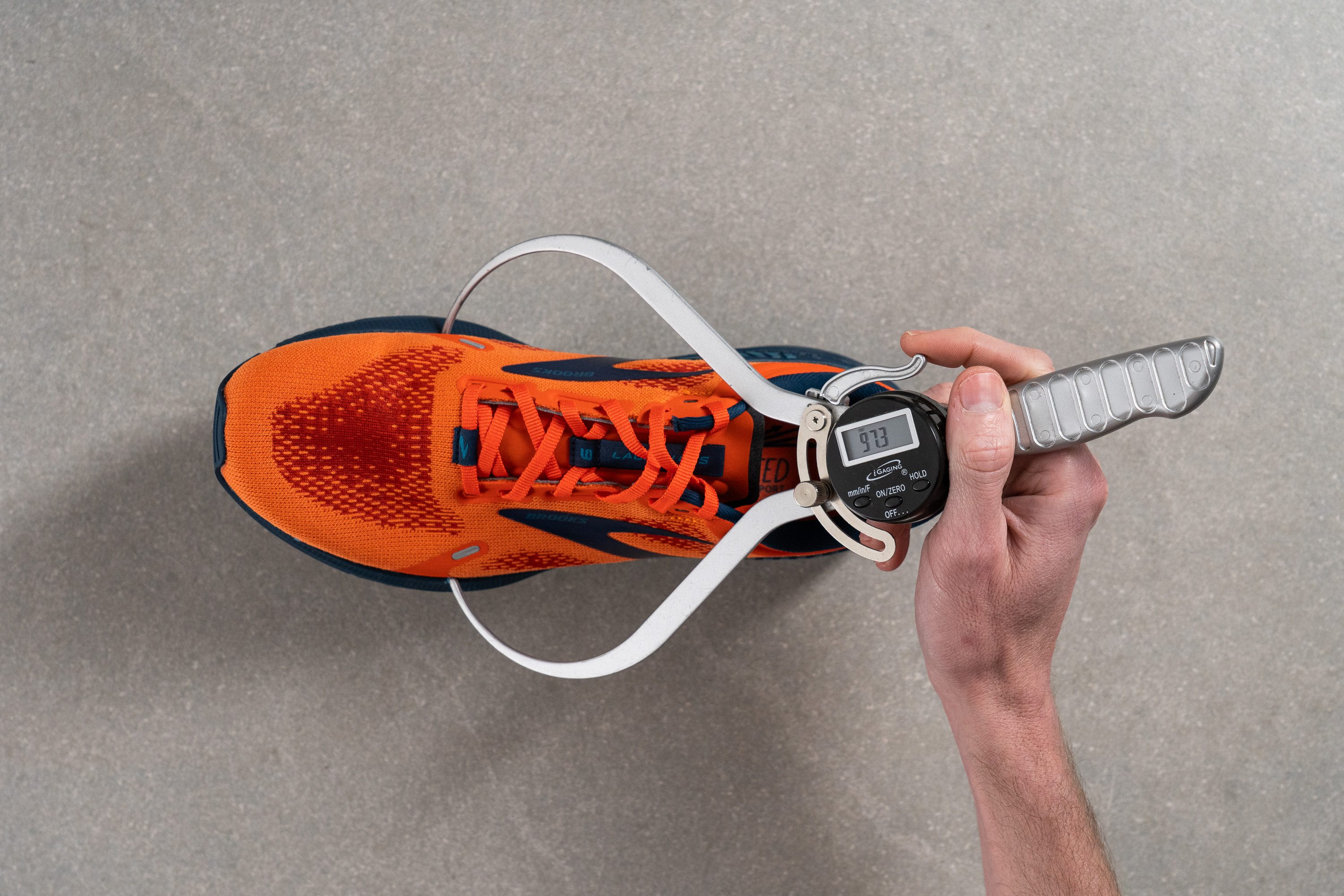
This test follows an older methodology, which is why you don't see recently tested shoes in the chart. Results from different methodologies can not be compared.
| Launch GTS 9 | 97.3 mm |
| Average | 98.5 mm |
Toebox width - big toe
The toebox is also just shy of our current lab average in the area around the big toe, measuring 76.8 mm wide according to our caliper measurements.

This test follows an older methodology, which is why you don't see recently tested shoes in the chart. Results from different methodologies can not be compared.
| Launch GTS 9 | 76.8 mm |
| Average | 78.4 mm |
Flexibility / Stiffness
We secured the Launch GTS 9 to our workbench and found that 24.3N of force is needed to bend it to 90 degrees, making it more flexible than the average road shoe.
This effectively offsets the high level of torsional rigidity imparted by the GuideRails by allowing the shoe to bend along with the natural flexion of our foot longitudinally. As such, the Launch GTS 9's ride feels like a good balance of comfort and support that feels much less obtrusive underfoot than most stability shoes.

This test follows an older methodology, which is why you don't see recently tested shoes in the chart. Results from different methodologies can not be compared.
| Launch GTS 9 | 24.3N |
| Average | 28.1N |
Stiffness in cold (%)
We also repeated the flex test after chilling the shoe in our freezer for twenty minutes and, again, found that the Launch GTS 9 is essentially impervious to the cold. It only became 4.9% stiffer which is remarkably consistent compared to the average road shoe. This, in combination with the midsole's similar resistance to cold conditions and the toasty upper, makes the Launch GTS 9 an excellent wintertime companion.
| Launch GTS 9 | 5% |
| Average | 33% |
Weight
We are happy to report that the presence of stabilising GuideRails didn't add a tonne of bulk to the Launch GTS 9. It's less than an ounce heavier than the regular Launch 9 and keeps its light at 8.6 oz (245g).
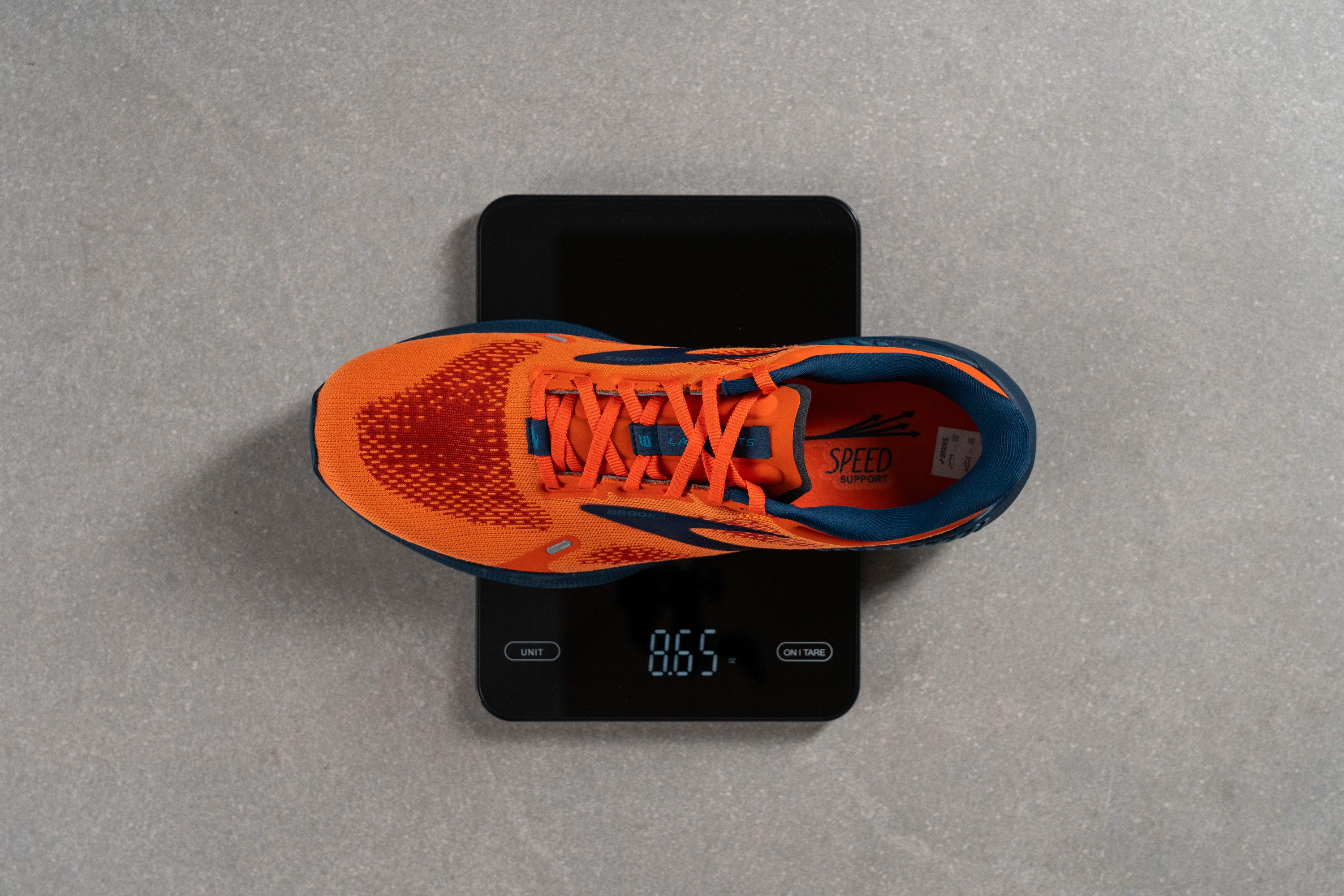
| Launch GTS 9 | 8.6 oz (245g) |
| Average | 9.3 oz (264g) |
Breathability
We pumped the Launch GTS 9 full of smoke to see how well-ventilated it is and were underwhelmed with the results. As we can see from the footage, it takes quite some time before the smoke is able to filter through the upper. Eventually, the shoe is clouded in a light haze that earns it a breathability score of 2 out of 5. While this isn't ideal for warm weather, it does make the Launch GTS 9 well-suited for runs on colder days.
Upon inspecting a backlit cross-section of the shoe's upper, we would have expected a better performance in the smoke test as the light is able to shine through the numerous perforated sections quite easily. That said, these clearly do provide some level of airflow which means that the shoe shouldn't trap in odours and become stinky too quickly.
Looking at the creel wrap mesh under our microscope gives us a better understanding of the upper's lacklustre breathability. The dense, multi-layered network of fibres of different thicknesses form lots of barriers that prevent heat from smoothly escaping the shoe.
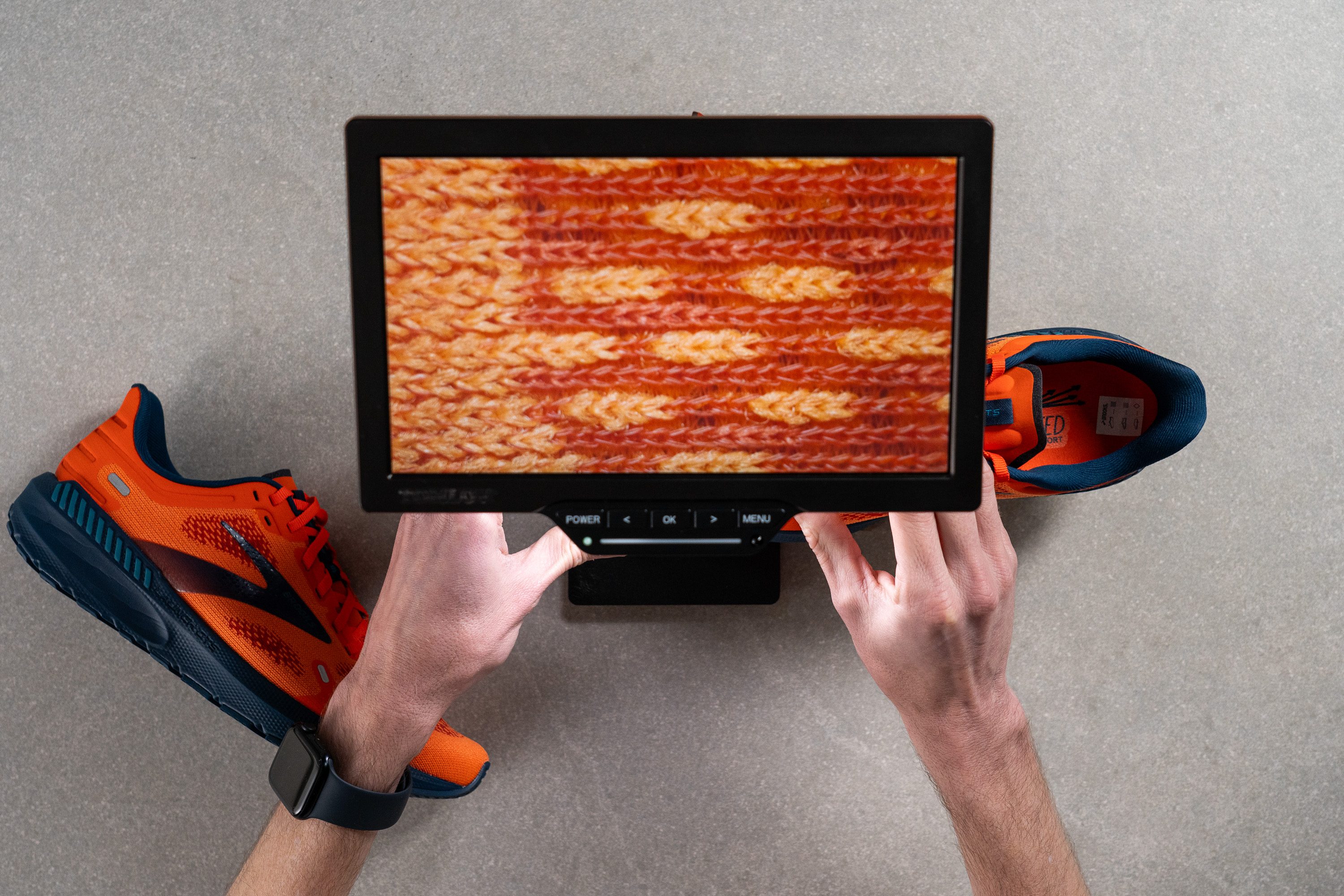
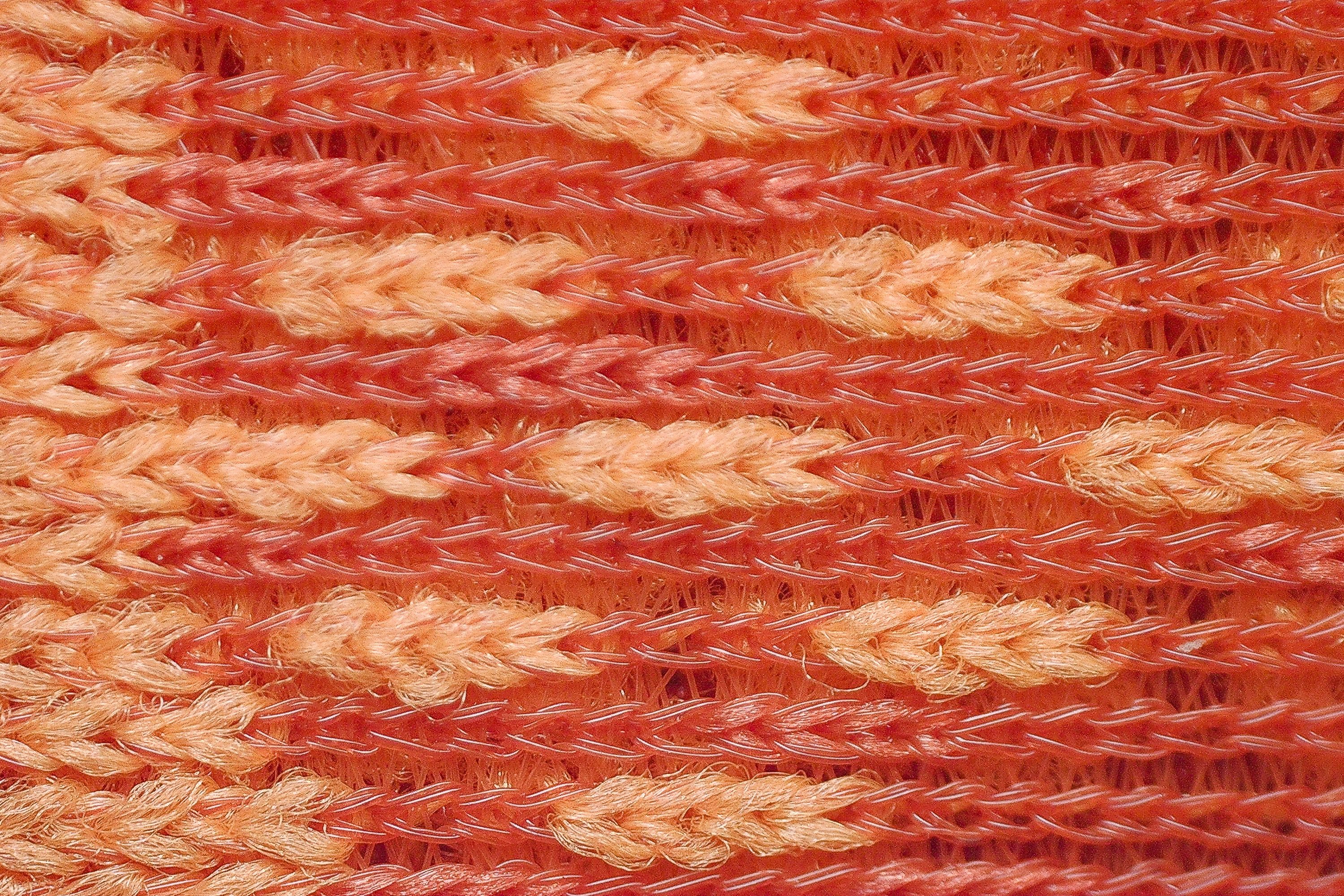
| Launch GTS 9 | 2 |
| Average | 3.7 |
Stability
Lateral stability test
Despite looking, and feeling, very much like a neutral runner; the Launch GTS 9 boasts several features that work to subtly mitigate any overpronation in our stride.
Chief among these is the eponymous "Go-To Support" stability system in the form of firmer foam GuideRails that encompass the foot within the midsole. These are higher on the medial side and serve to nudge the foot towards a more neutral position throughout our stride.
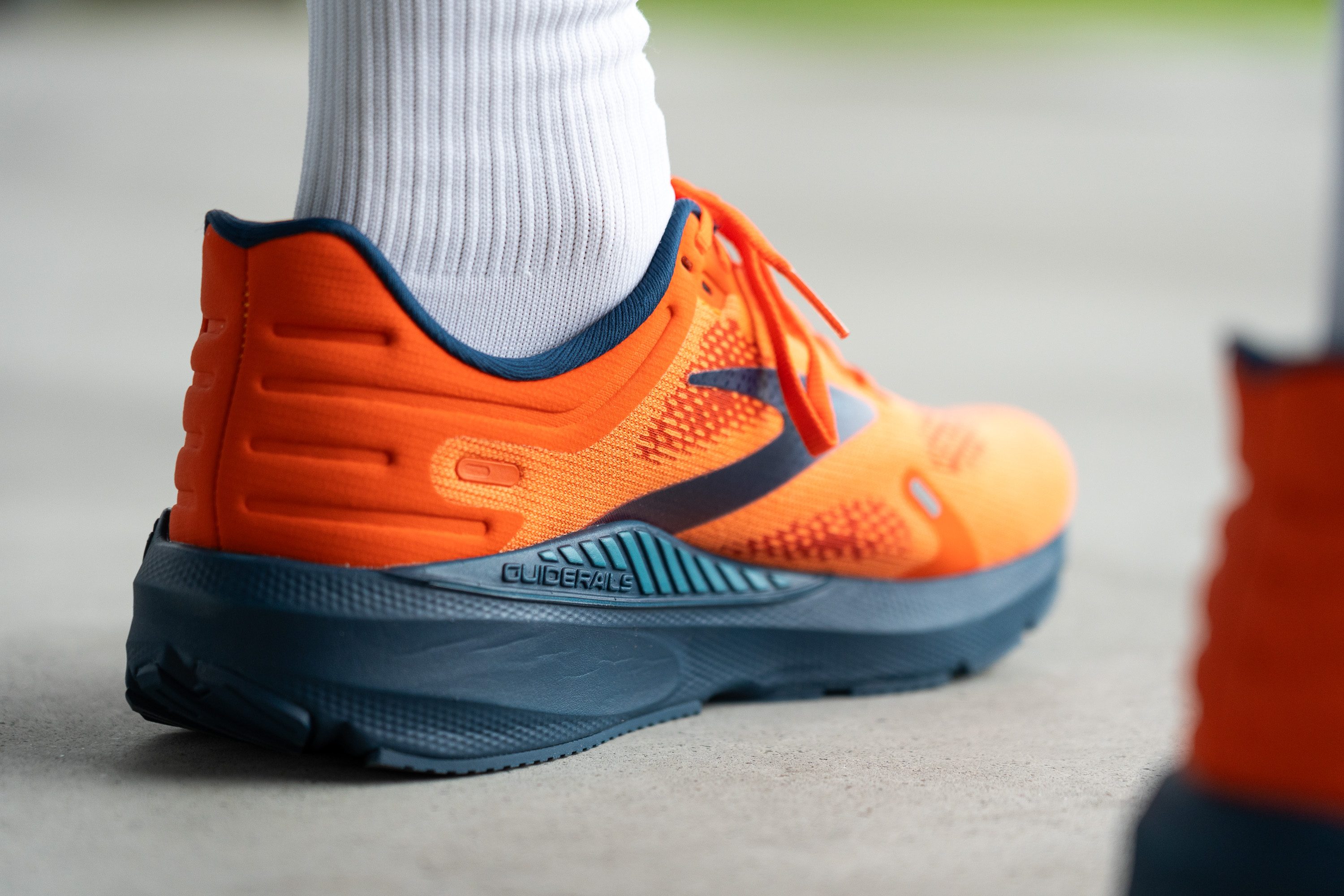
Torsional rigidity
These GuideRails also impart a high level of torsional rigidity to the shoe, making it virtually impossible to bend or twist in our manual assessment. We, therefore, give the shoe the maximum score of 5 out of 5 on our subjective scale. This is good for a stability shoe as it resists the natural twisting and rolling movements of our foot while maintaining a level and steady landing platform that keeps us from wobbling.
| Launch GTS 9 | 5 |
| Average | 3.5 |
Heel counter stiffness
The heel counter is also quite stiff, leading us to give it a score of 4 out of 5 on our subjective scale. This amount of structure at the rearfoot really locks our heel in place and encourages better alignment while still allowing for some natural lateral movements in our ankles. As such, the Launch GTS 9 feels very supportive while still allowing for some comfort at the heel.
| Launch GTS 9 | 4 |
| Average | 2.9 |
Midsole width - forefoot
Using our caliper, we measured the Launch GTS 9's midsole to be 112.9 mm wide at the forefoot which is right on par with our current lab average. This gives us more than enough of a base underfoot that we didn't feel like our balance was impacted during testing. What's more, by not going too wide with the midsole, the shoe avoids feeling blocky when taking corners at high speeds.

| Launch GTS 9 | 112.9 mm |
| Average | 114.4 mm |
Midsole width - heel
Back at the heel, the midsole falls short of our current lab average at only 85.8 mm wide. This also wasn't an issue during our test runs and skimping on material back there is likely an effective weight-saving measure. That said, for heel strikers who prefer having more of a landing platform, we recommend checking out the Mizuno Wave Inspire 20 as an alternative.
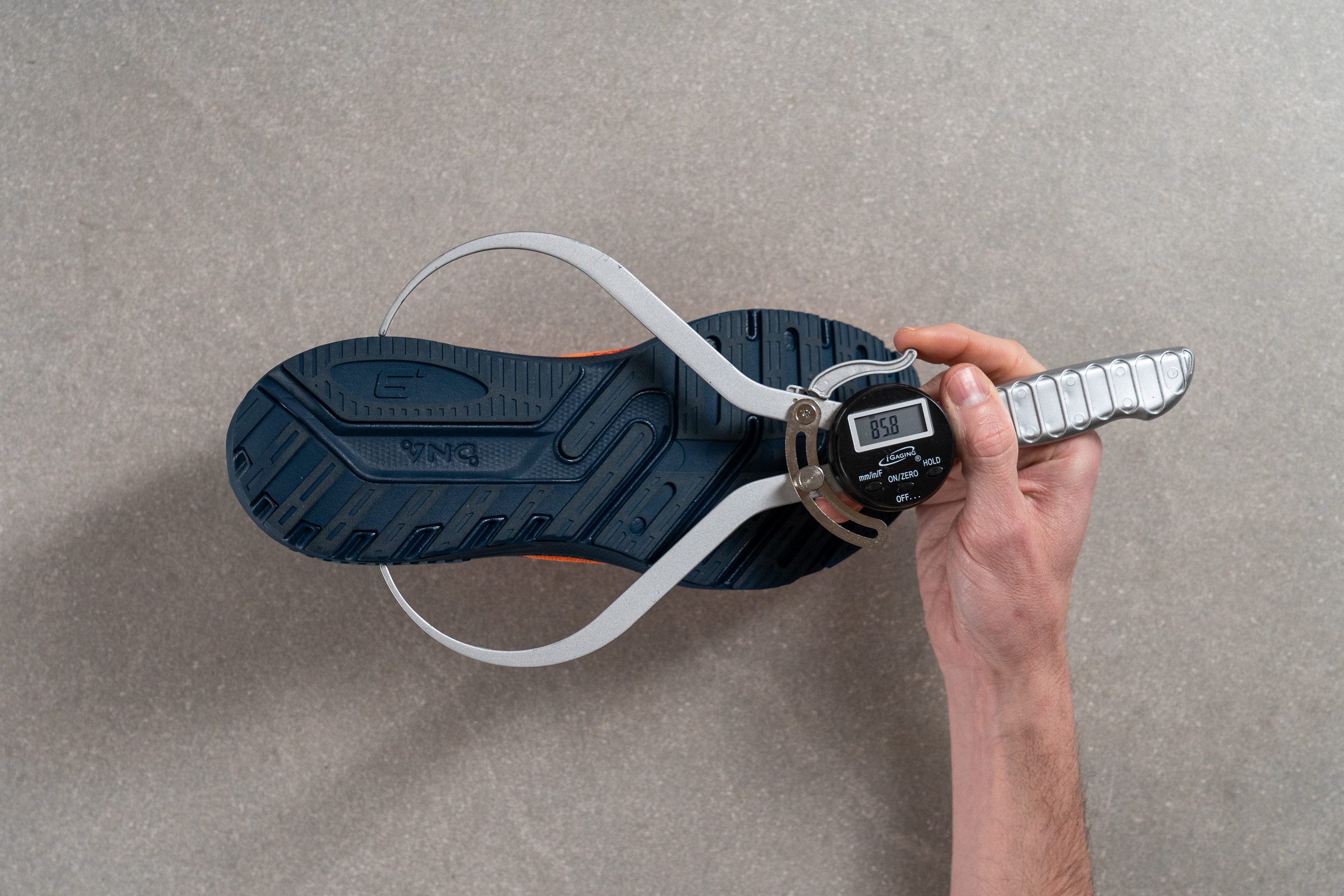
| Launch GTS 9 | 85.8 mm |
| Average | 90.7 mm |
Durability
Toebox durability
While the density of the toebox mesh isn't conducive to breathability, it puts the Launch GTS 9 in good stead for its face-off against our Dremel.
The tool's abrasive element was able to fray the upper layers of the mesh, but it wasn't able to penetrate all the way through the toebox which was left mostly intact in the wake of the four-second test. This leads us to give the Launch GTS 9 a very respectable 3 out of 5 for toebox durability. As such, we don't expect a few accidental bumps or scrapes to cause any major structural damage over the shoe's regular lifetime.

Compare that to the utter destruction wrought upon the UA Charged Assert 9's frail mesh.
| Launch GTS 9 | 3 |
| Average | 2.6 |
Heel padding durability
Next, we turn our attention to the heel collar and set our Dremel against the Launch GTS 9 once more.
After the four-second test was up, we found that our tool had left a small nick on the lining while the pillowy padding within was left more or less intact. As such, we give the shoe a heel padding durability score of 4 out of 5. This clearly demonstrates the shoe's built-to-last nature which makes it well worth its reasonable price tag.
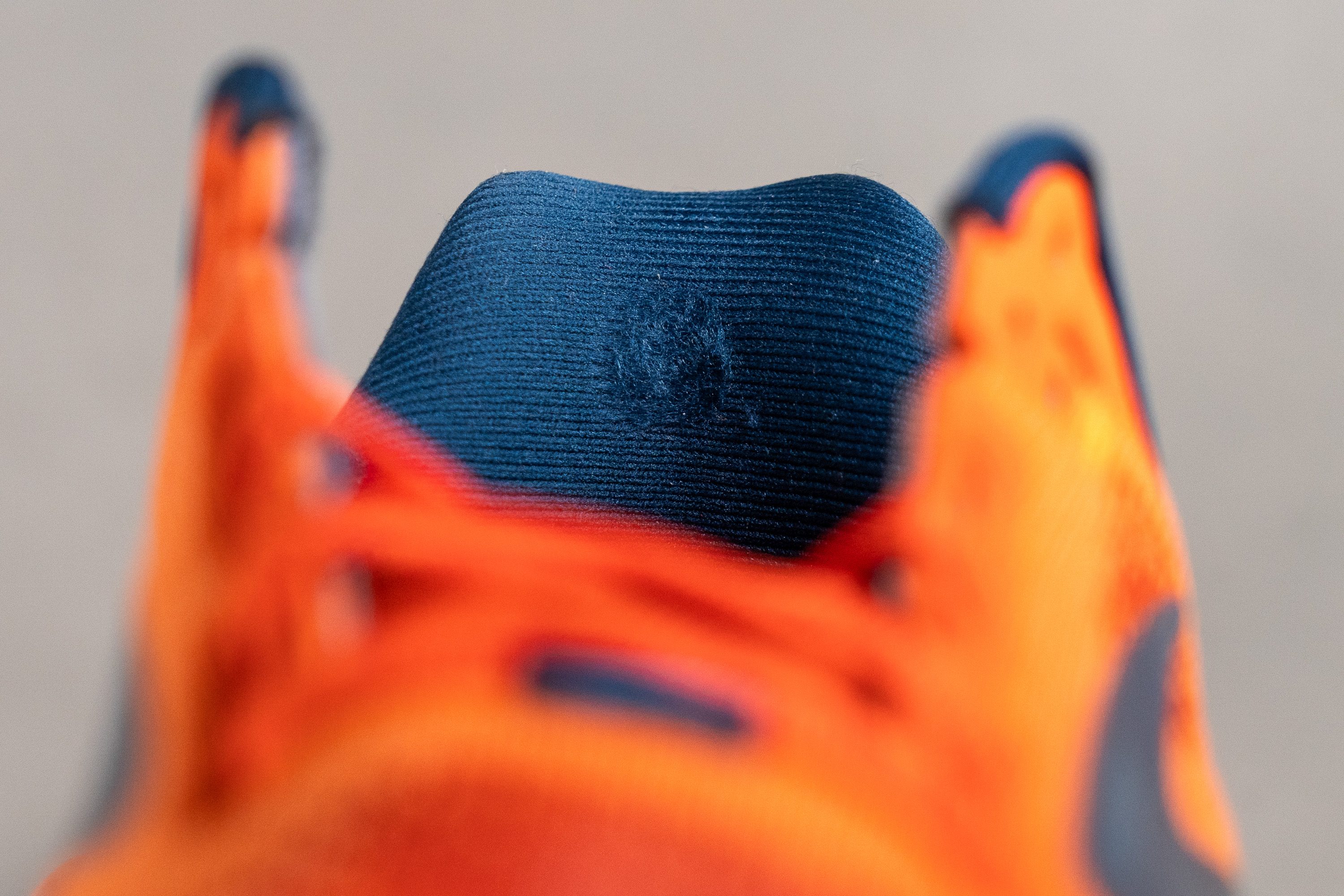
| Launch GTS 9 | 4 |
| Average | 3.4 |
Outsole hardness
Pressing our durometer against the outsole rubber yields a harder-than-average reading of 87.3 HC. This actually puts it more on par with the average trail shoe and bodes well in terms of the Launch GTS 9's durability.
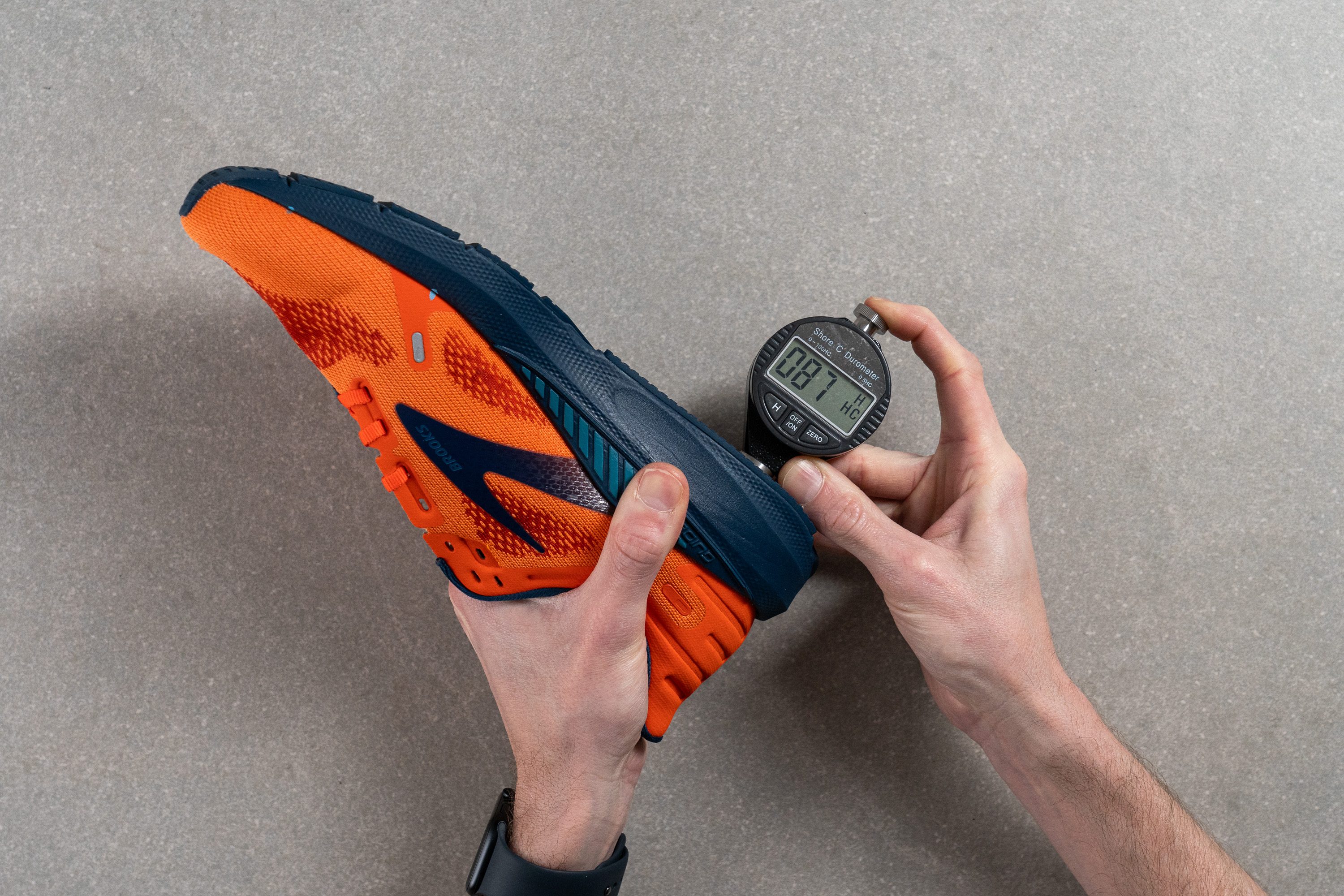
On the other hand, with the outsole being the first part of the shoe to make contact with the ground, this level of hardness gives us a firm initial feeling to our landings before the midsole cushioning kicks in.
| Launch GTS 9 | 87.3 HC |
| Average | 79.2 HC |
Outsole durability
Now spinning at a more formidable 10K RPM, we pressed our Dremel against the outsole for twenty-two seconds of grinding. Once the dust had settled, we used a tyre tread gauge to assess the damage and found that we had only lopped off a mere 0.4 mm of rubber from the outsole.
This is much more durable than our current lab average and means that the Launch GTS 9 should comfortably surpass the expected 400 - 500 mile shelf life with minimal signs of wear and tear. Being this hardy means that we can confidently tackle mild trails without fear of bringing an early end to the outsole.
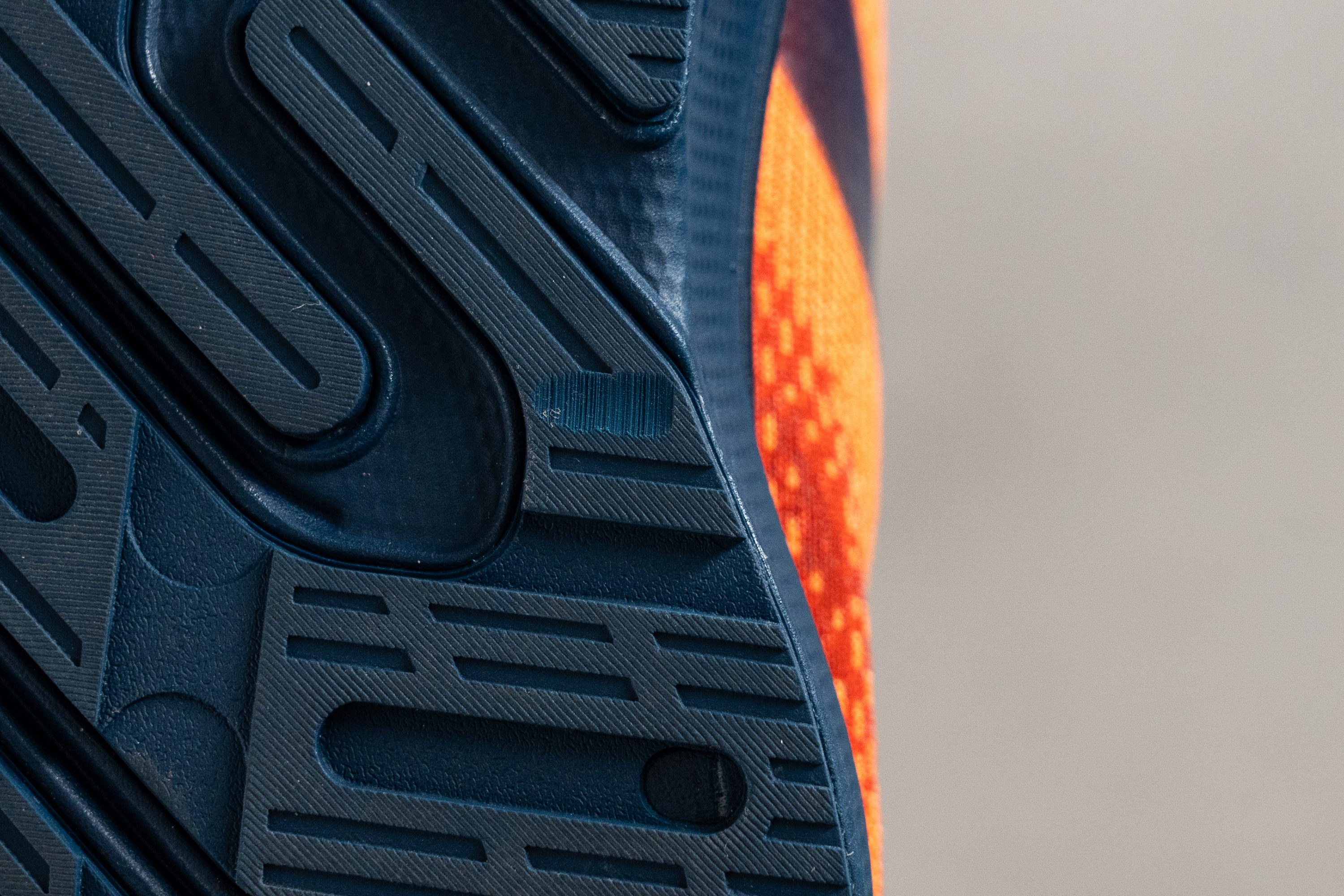
| Launch GTS 9 | 0.4 mm |
| Average | 1.1 mm |
Outsole thickness
The Launch GTS 9 boasts an average amount of rubber in its outsole which is 3.5 mm thick according to our caliper measurements. This gives us no cause for concern given the shoe's performance against our Dremel.
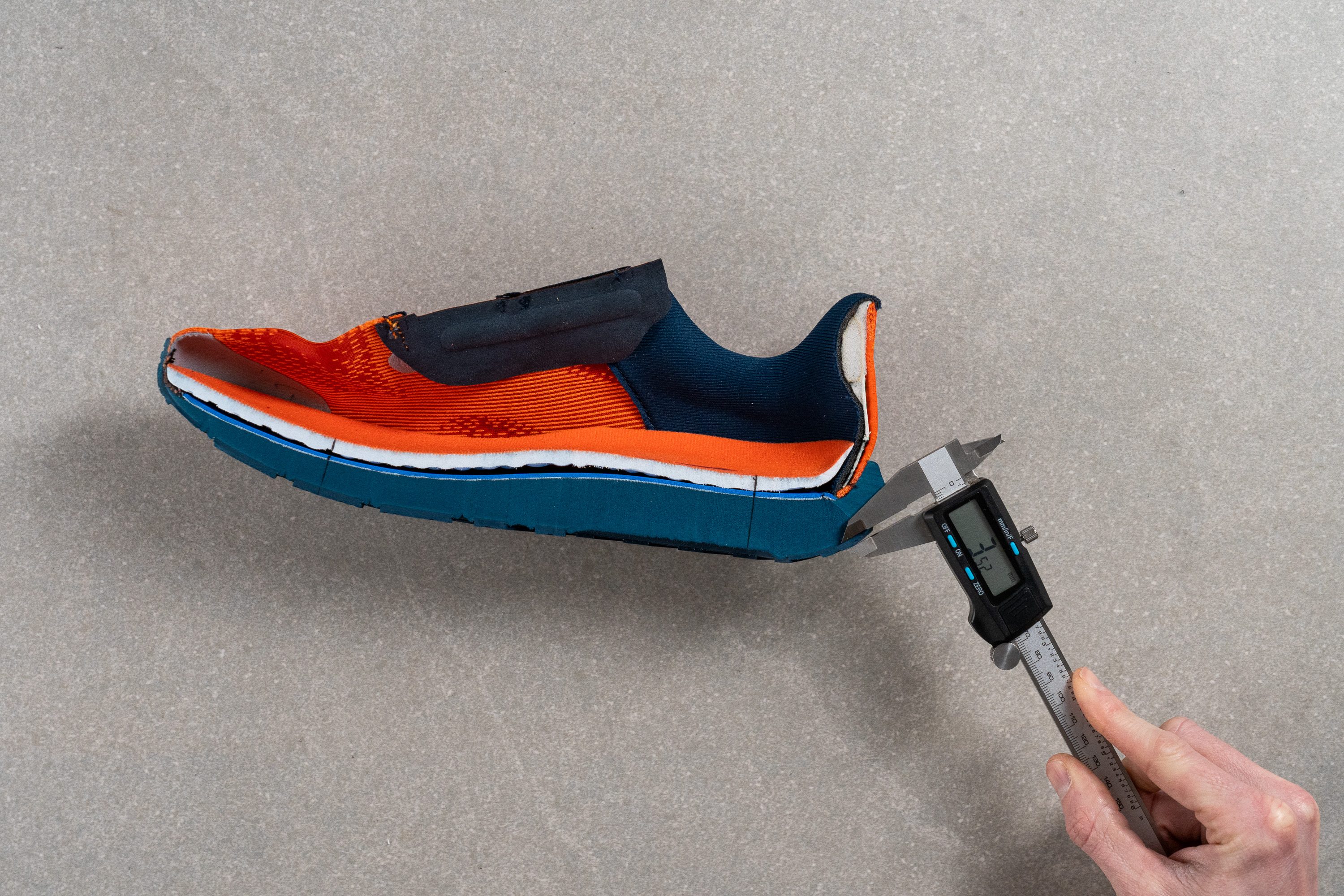
| Launch GTS 9 | 3.5 mm |
| Average | 3.2 mm |
Misc
Insole thickness
The Launch GTS 9's insole is significantly beefier than average at 6.6 mm thick according to our caliper measurements. This gives us an exceptionally cushy footbed to sink into that offsets the firmness of the outsole during our landings. Furthermore, it provides excellent arch support that helps us maintain alignment as we run and protects us from the specter of fallen arches.
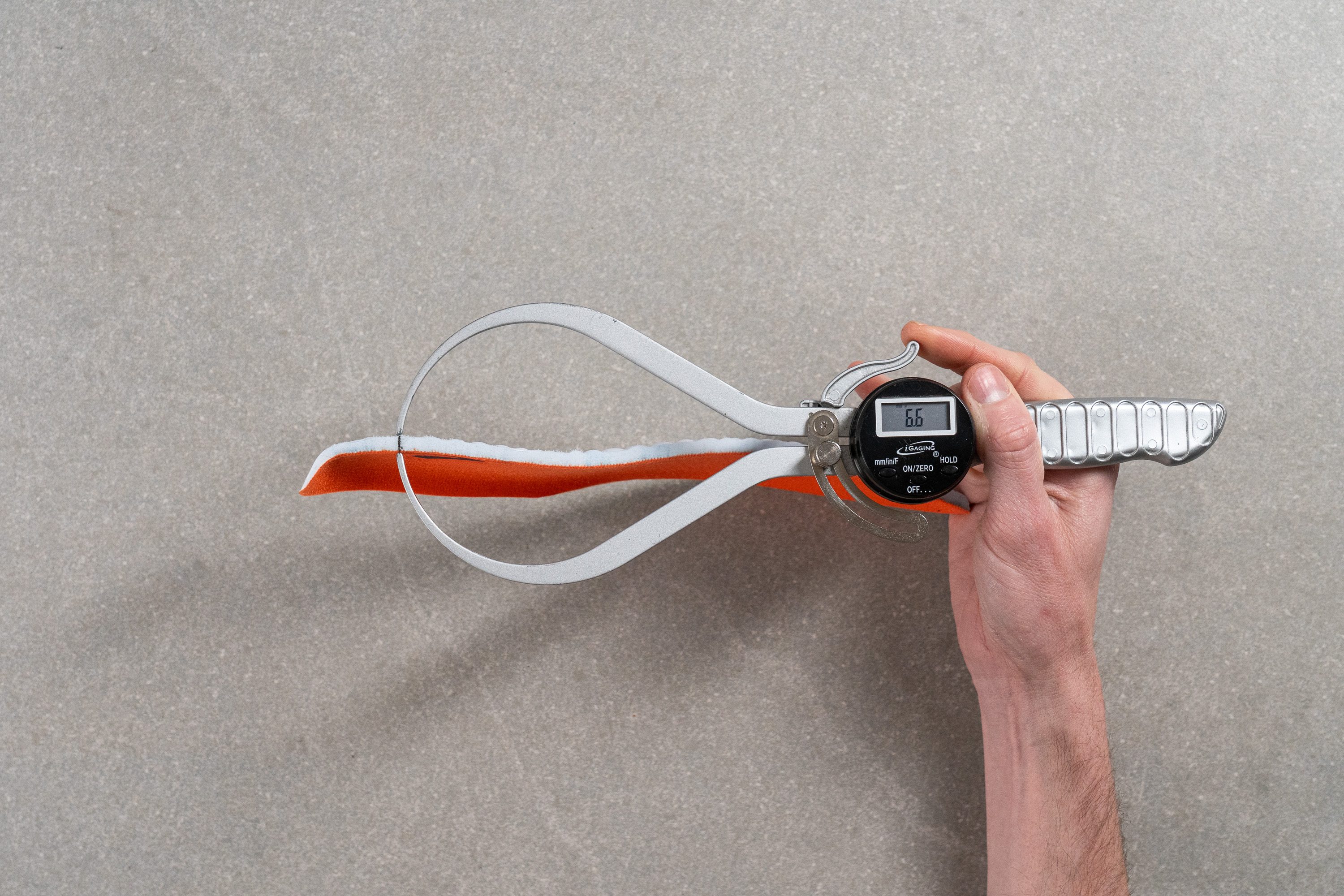
| Launch GTS 9 | 6.6 mm |
| Average | 4.5 mm |
Removable insole
The insole isn't glued in so replacing it with an aftermarket alternative or a custom orthotic is possible if necessary.

| Launch GTS 9 | Yes |
Midsole softness in cold (%)
We placed the Launch GTS 9 in our freezer for twenty minutes to see what effect cold conditions have on the midsole. Pressing our durometer against the appropriately chilled shoe yielded a result so surprising we had to check if our ice cream was melting in the freezer. With a result that's only 9.4% firmer than at room temperature, the BioMoGo foam proves to be much more consistent than average and should feel about the same underfoot no matter how low surrounding temperatures drop.
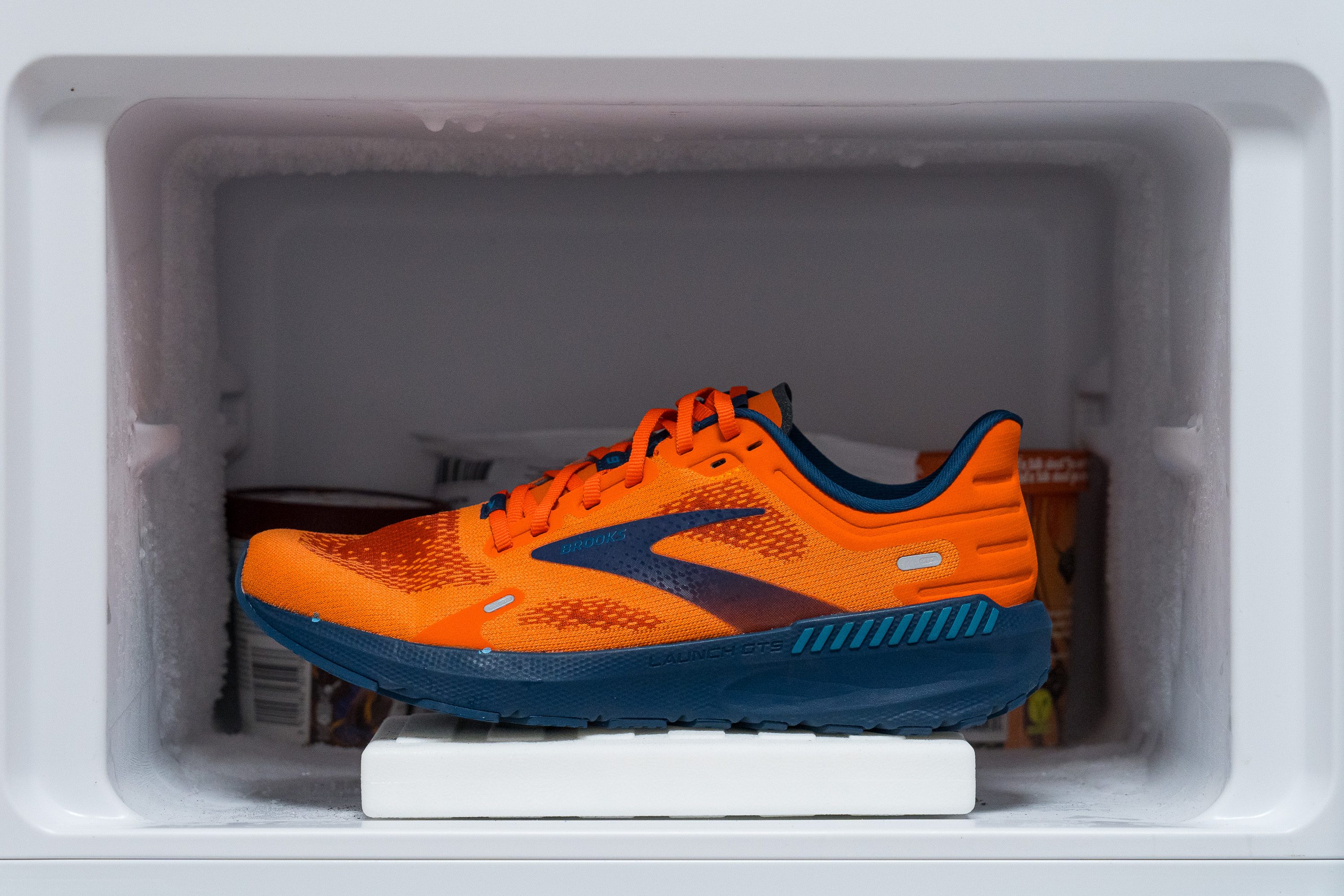
| Launch GTS 9 | 9% |
| Average | 24% |
Reflective elements
There are a number of small reflective elements that dot the Launch GTS 9's upper and provide some nighttime visibility. However, this is quite minimal and we recommend using additional high-vis gear if running along the road at night.
| Launch GTS 9 | Yes |
Tongue padding
At only 2 mm thick according to our calliper measurements, the Launch GTS 9's tongue is much less padded than average and reminiscent of fast, race-ready shoes. This certainly helps keep some weight off the shoe but does mean that the laces feel quite prominent across our instep once we're locked in nice and tight.
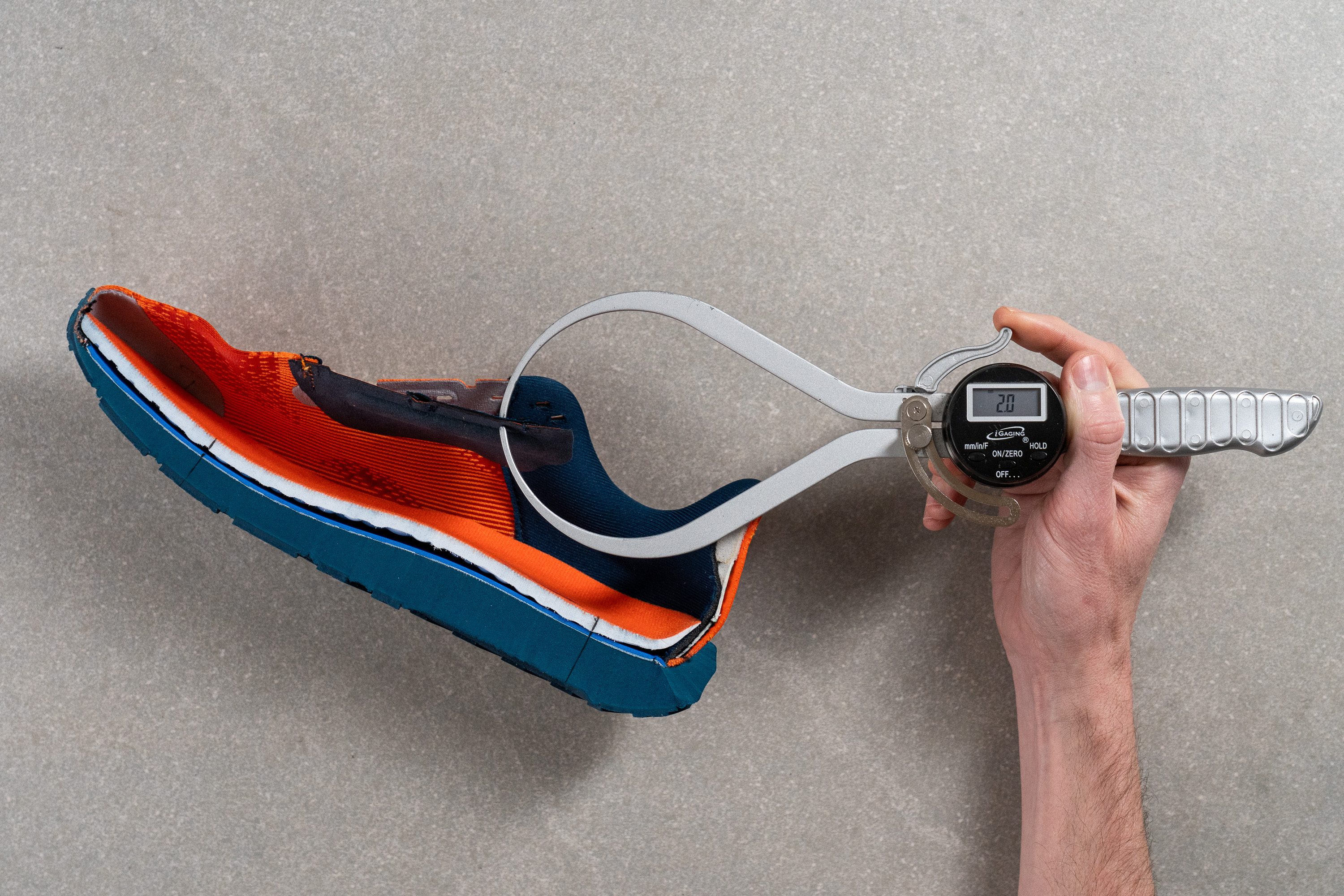
We didn't find this to be too uncomfortable during testing, though for those who prefer a little more padding from their daily trainers, we recommend checking out the Brooks Adrenaline GTS 23 instead.
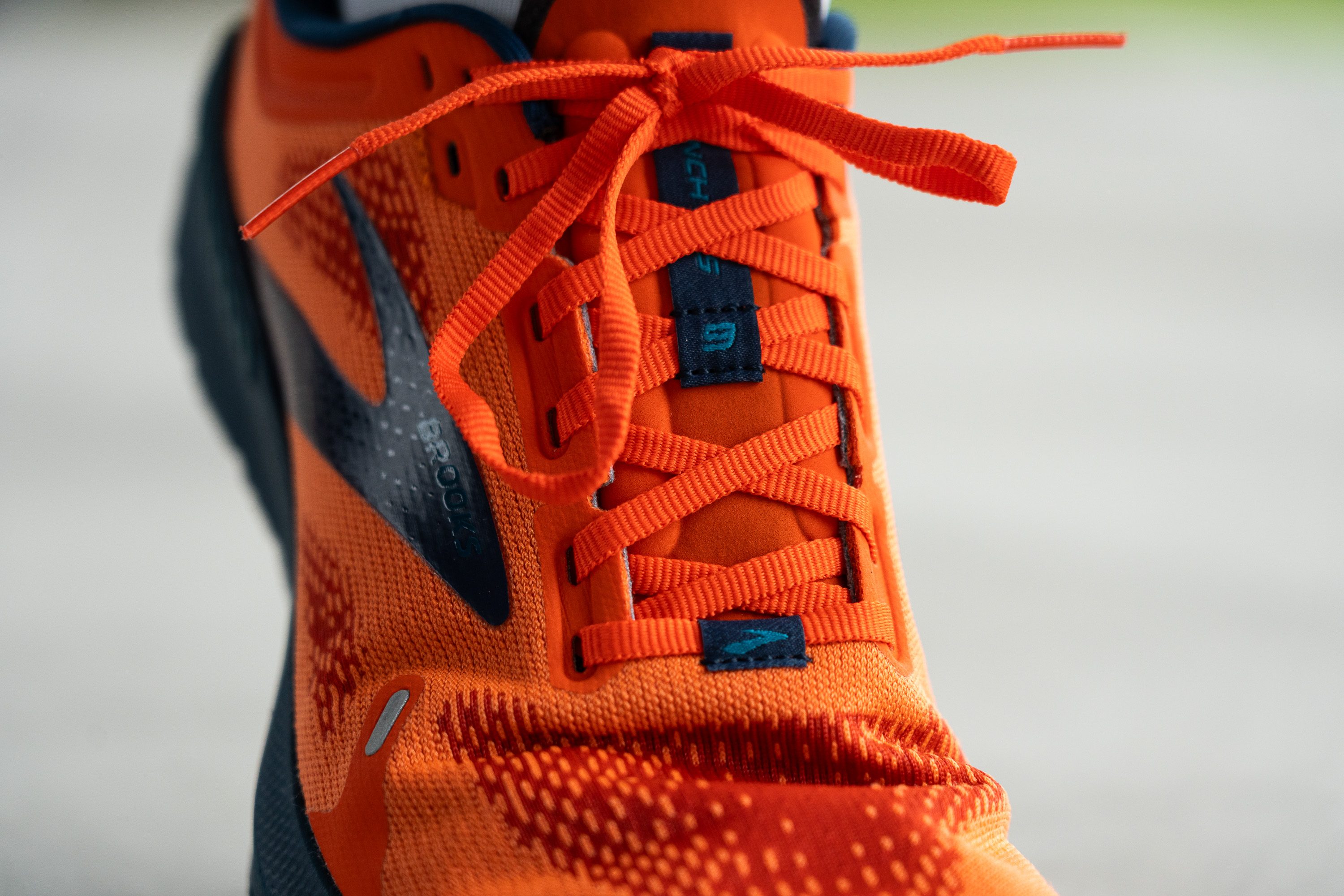
| Launch GTS 9 | 2.0 mm |
| Average | 5.8 mm |
Tongue: gusset type
The Launch GTS 9's paper-thin tongue isn't gusseted in any way. Despite this, however, we didn't experience any major slippage during testing, even when pushing the shoe to higher paces.
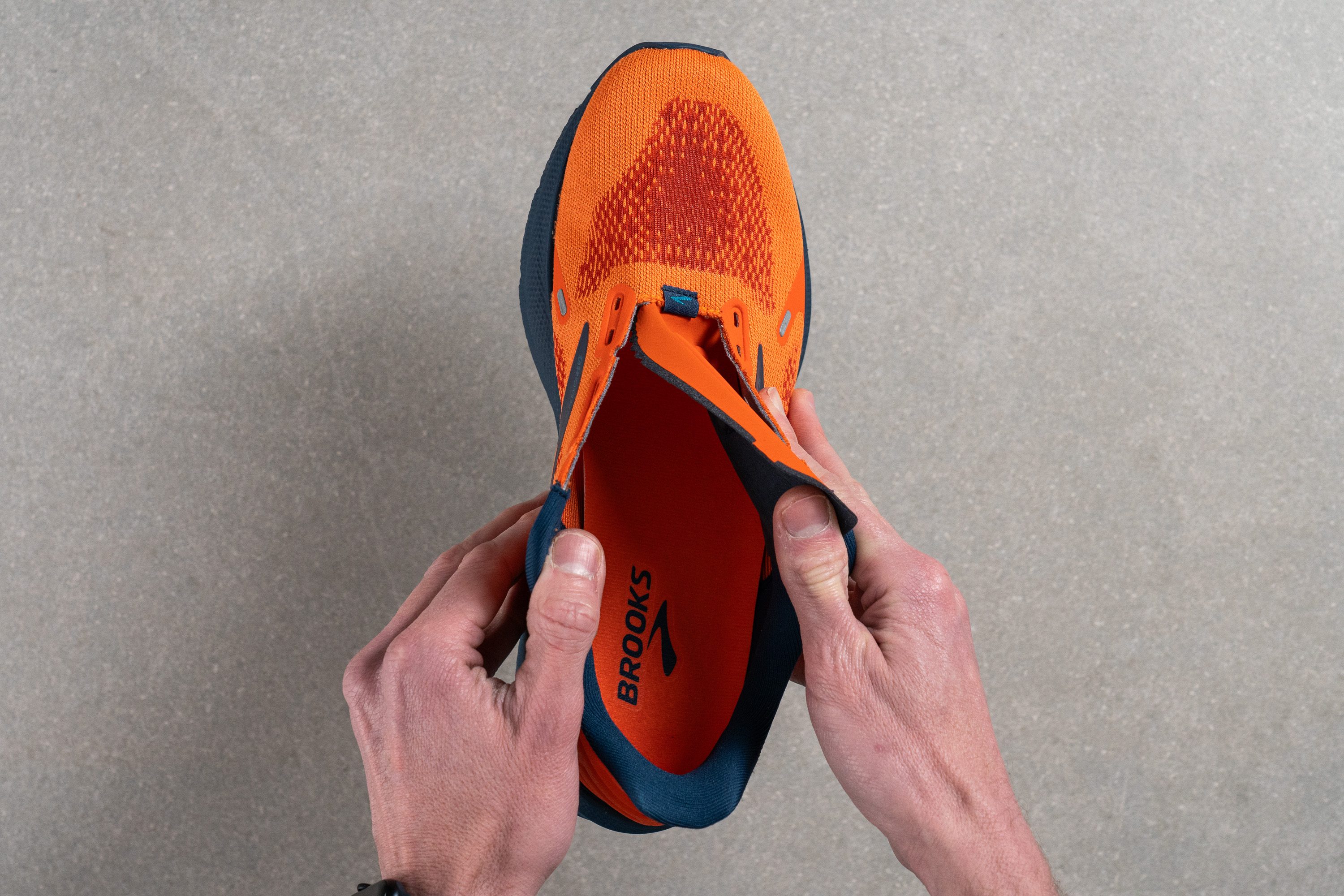
| Launch GTS 9 | None |
Heel tab
The Launch GTS 9's heel collar extends upwards to form a little tab that can be pulled on to help slide the shoe on. This is a handy little feature though it does rub annoyingly against the Achilles when we test the shoe with shorter socks or no socks at all.
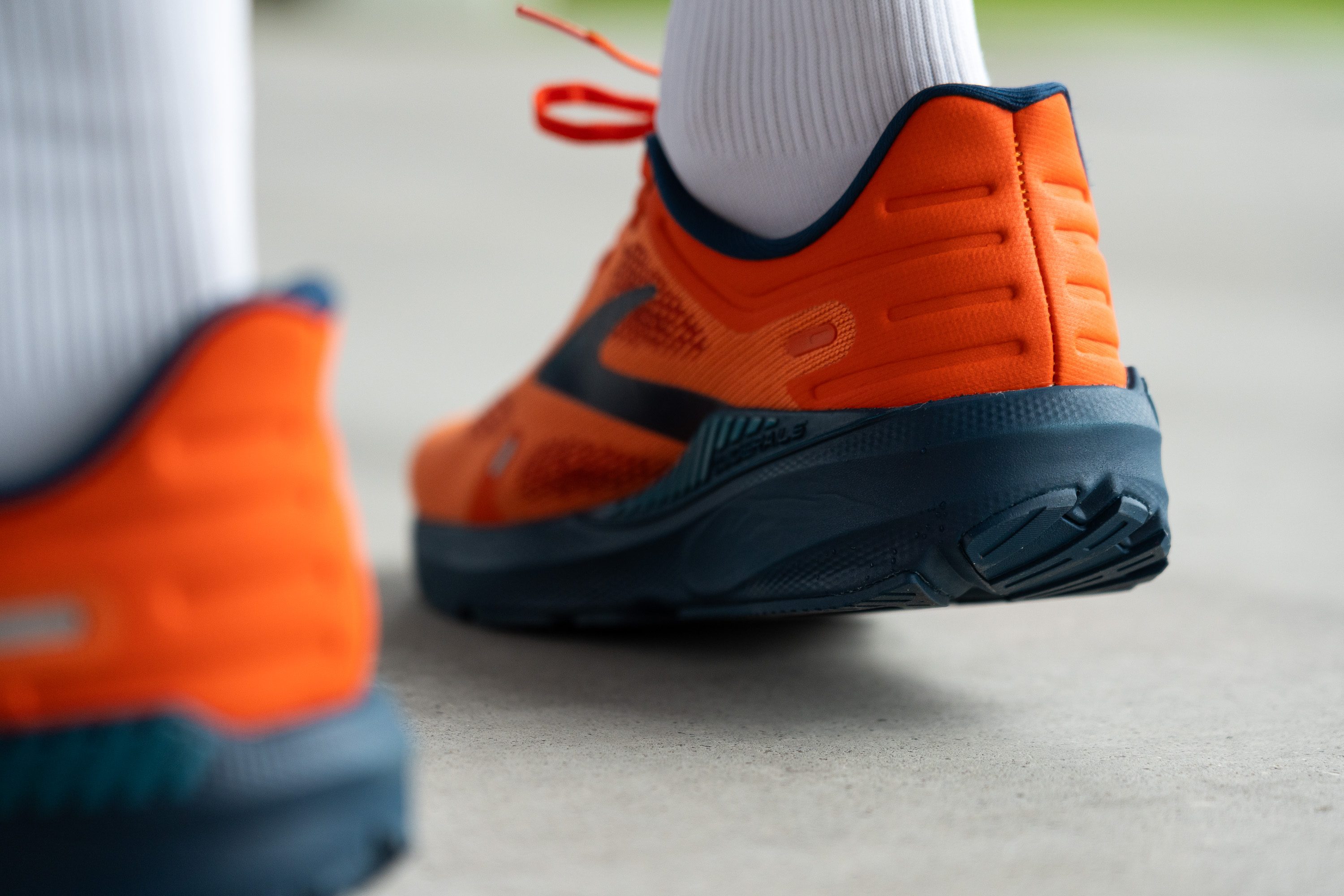
| Launch GTS 9 | Extended heel collar |

